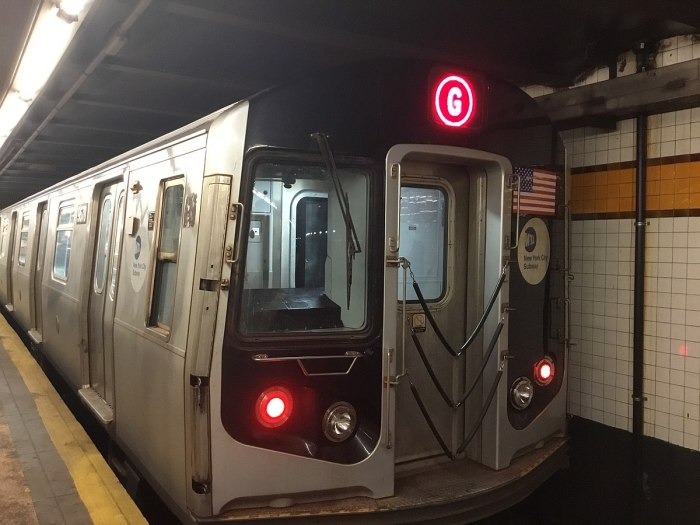
Tuesday marked the one-year anniversary for No New Jails NYC, an activist group calling for Rikers Island to be closed without adding new jails, plus eventual jail abolition in New York City.
It’s a call, and a group, that have quickly become a thorn in the side of many professional NYC criminal justice reformers.
“I don’t think they are a group that makes any sense or is adding anything to this discussion,” says former New York Chief Judge Jonathan Lippman, who headed a commission that developed a blueprint with the goal of shutting down Rikers by building borough-based jails. The de Blasio administration is following that blueprint, which faces a City Council land use vote in October.
Lippman agrees that “the less people incarcerated the better,” but says it’s “ridiculous” to say that the city doesn’t need any jails.
Elizabeth Glazer, head of the Mayor’s Office of Criminal Justice, describes the group’s effort philosophically: “It feels like a signal of the times we’re living in,” she says, a divide in how we think about crime and punishment.
Here is how the divide shakes out: The plan to close Rikers, which Mayor Bill de Blasio endorsed in 2017, includes the construction of four smaller jails as replacements in each borough, except Staten Island.
After city and state changes in what people are arrested for and what happens next, the plan represents the belief that fewer people could and will be held in city jails. At a September hearing the city pointed to a planned capacity of around 4,600 beds, down from 13,100 before the closure of a facility on Rikers.
The plan also suggests practical improvements over Rikers. New Yorkers would generally be held closer to courts, lawyers, and home while awaiting trial. Rikers itself was and is a horror of crumbling and aging facilities that aren’t particularly well-suited for getting people help, if they need it, while behind bars. The new facilities would have larger visiting areas and dayrooms with access to outdoor recreational areas. Those are significant changes beyond the external benefits of people being incarcerated in communities as opposed to on a far-off island.
The No New Jails group also thinks Rikers should close and fewer people should be arrested, but without supporting new jails would use current borough facilities that the mayor would replace. More generally, they think those facilities should be closed, too.
This vision has been getting more attention as the jail vote gets closer. The vision was on display Friday as around 50 No New Jails supporters protested outside the bail window of the Brooklyn Detention Complex, sporting “kill the deal” signs and facemasks of Stephen Levin, the Democratic City councilman who represents the area and has an influential vote on the administration’s jails plan.
Speakers called for the billions associated with the plan (approximately $9 billion, according to the city) to be used for mental health services, homeless prevention, NYCHA improvements and more.
The general message of the speakers and a 55-page document posted on the group’s new website on Tuesday is that incarceration can breed dangerous situations.
Albert Saint Jean, 36, talked about visiting kids in jails swept up in gang raids in Flatbush who weren’t gang members when they were swept in. “But you put them through the recruiting grounds,” he warned.
Some of No New Jails’ questions may resonate with New Yorkers looking for a lumbering criminal justice system to quickly change.
There are certainly a lot of questions to figure out if the city’s plan moves forward, including how the transition works until Rikers would close in 2026.
More broadly, the activists fear that big construction even of better, more humane jails will lock NYC into a too-large jail capacity. The city jail population has plummeted by 65 percent since its 1991 peak, says the city. The 2019 fiscal year average daily population was 7,938, according to the Mayor’s Management Report released Tuesday. With further bail reforms coming on the state level, what if that keeps dropping below the 4,000 people and 4,600 beds the city has been planning for? The city says that adaptability is an issue that has been raised internally and at public meetings, but seems to see it as a challenge for the future.
Of course, plenty of New Yorkers oppose the city jail plan for non-abolitionist reasons: they’re either worried New York is being too hasty to shut jails, or they’re angry about a 400-plus-foot tower in their Manhattan neighborhood.
The administration’s effort to close Rikers is caught between those arguments, and the often-rigid complaints of No New Jails, whose manifesto says the group is also against programs like ankle-monitoring or court-mandated diversion meant to keep people out of jail pre-trial.
The group also sweeps away current practices for what to do with people accused of serious violent felonies, more than 3,000 of whom were awaiting trial as of April 1, 2019, according to a city fact sheet.
The abolitionists suggest that communities take a more active role, also calling for “safe and secure residences for both those who have done harm and those who are at risk of being harmed.”
That sounds like it might bear some resemblance to new, improved jails.

































